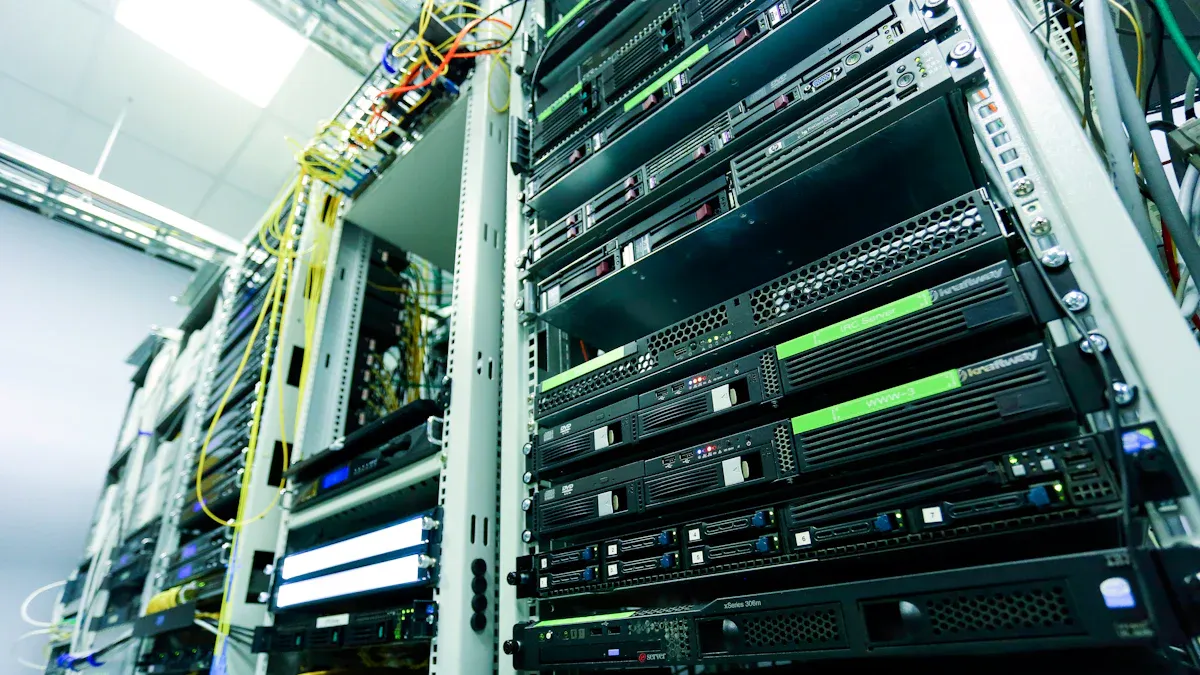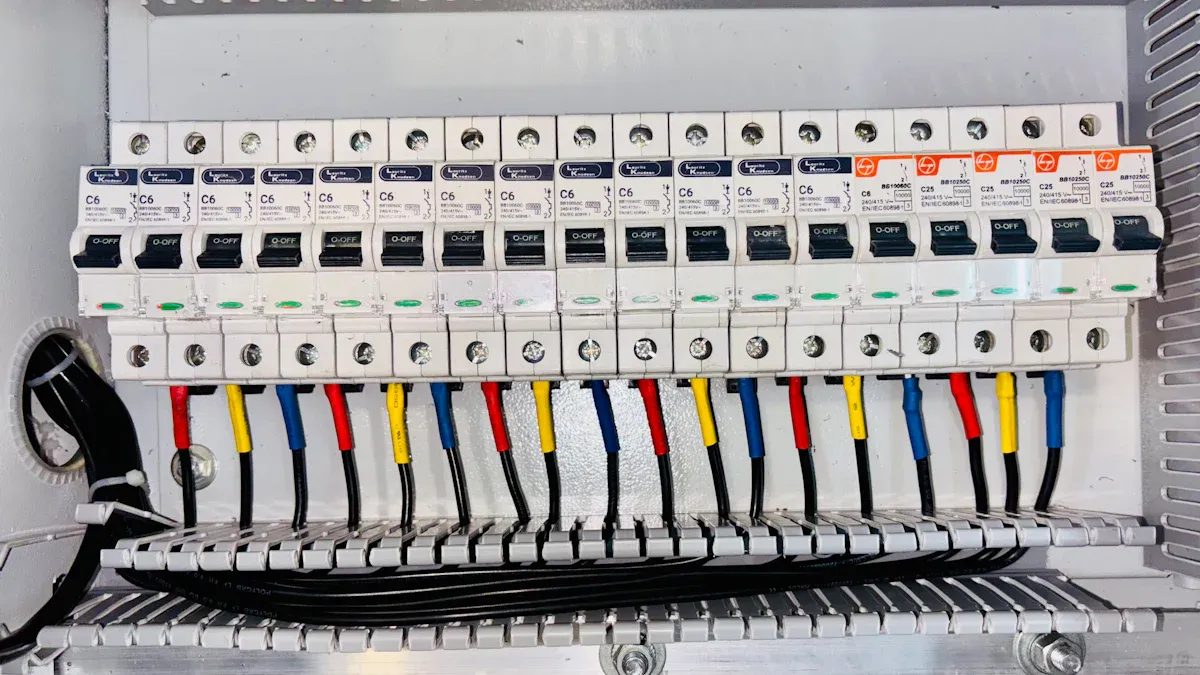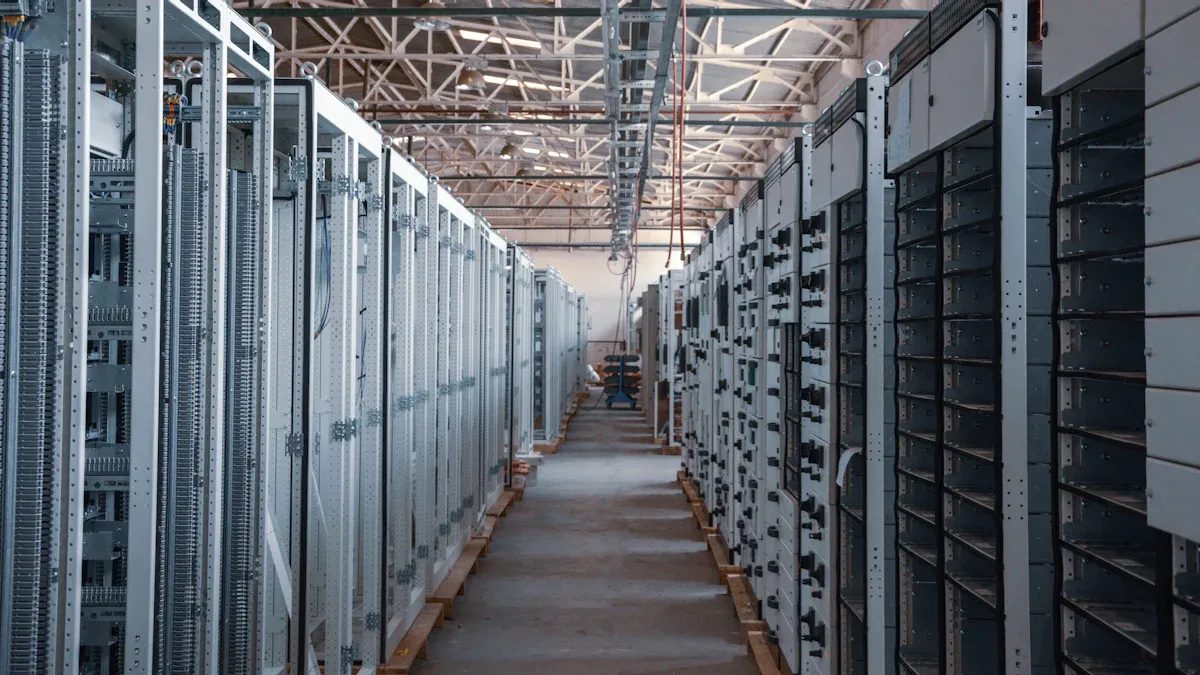
A Smart Rack PDU serves as a network-controlled power distribution unit, allowing for remote management of power outlets within data centers. This capability enables organizations to control power at the rack level, manage multiple facilities remotely, and significantly reduce operating costs through automated scheduling.
Key Takeaways
- Switched rack PDUs allow remote management of power outlets, reducing downtime and operational costs.
- Power scheduling features help save energy by turning off unused servers during low activity periods.
- Security features like outlet lockout and strong password policies protect critical equipment from unauthorized access.
Features of Switched Rack PDUs

Remote Reboot Capabilities
Switched rack PDUs offer robust remote reboot capabilities that significantly enhance operational efficiency. Administrators can quickly recycle power to unresponsive systems, which reduces server downtime and associated labor costs. Unlike traditional systems that necessitate physical presence for reboots, these PDUs allow immediate access and action from any location. This capability not only minimizes the time systems remain offline but also enhances operational flexibility.
Leading manufacturers provide various features in their remote reboot solutions. For instance, Vertiv Geist enables remote access to power usage and allows users to turn on, off, or reboot power at each outlet. Similarly, Legrand (Raritan) incorporates a built-in failover power system and advanced alerting capabilities. The following table summarizes key features offered by these manufacturers:
| Manufacturer | Key Features |
|---|---|
| Vertiv Geist | Remote access to power usage, ability to turn on/off/reboot power at each outlet. |
| Legrand (Raritan) | Built-in failover power system, bi-stable latching relays, advanced alerting capabilities, proactive intelligence monitoring. |
Power Scheduling
Power scheduling in switched rack PDUs contributes significantly to energy savings and operational efficiency. These units collect detailed data from individual outlets, helping identify servers that can be decommissioned or virtualized. They allow administrators to remotely switch off production servers during periods of low utilization, which can be turned back on when needed. This practice not only reduces power consumption but also lowers cooling requirements, leading to further energy savings.
The following table outlines the scheduling options available for power cycling in switched rack PDUs:
| Feature | Description |
|---|---|
| Outlet Control | Cycle power to individual outlets or groups of outlets to reboot servers or power off unused receptacles. |
| Remote Reboot | Remotely turn on, turn off, or reboot power at each outlet, ideal for locked-up devices. |
| Power Monitoring | Available with or without outlet-level power monitoring for better management of power usage. |
Outlet Lockout
The outlet lockout feature in switched rack PDUs enhances security by restricting access to specific outlets. This capability prevents unauthorized devices from drawing power, safeguarding critical systems from accidental overloads and tampering. In shared environments like colocation data centers, outlet lockout ensures that only authorized personnel can access designated power sources.
Key aspects of outlet lockout include:
- Preventing unauthorized access to critical equipment.
- Ensuring equipment is shut down, de-energized, and secured against accidental reactivation.
- Utilizing padlocks and tagging out equipment with warnings to enhance safety.
The following table summarizes the purpose and method of outlet lockout:
| Aspect | Description |
|---|---|
| Purpose | Ensures equipment is shut down, de-energized, and secured against accidental reactivation. |
| Method | Involves locking out energy sources with padlocks and tagging out equipment with warnings. |
Multi-Facility Management
Switched rack PDUs facilitate multi-facility management, allowing organizations to oversee power distribution across various locations efficiently. This capability addresses several challenges, including the need for remote control capabilities and real-time environmental monitoring. Effective management of multiple IP devices across different facilities ensures proper power distribution and load balancing, preventing overloads and outages.
However, managing multiple facilities can be complex. Environmental factors like heat and humidity can severely impact infrastructure. Many data center managers may not be aware of these issues until they escalate. Incorporating environmental sensors can help monitor and alert users about potential threats. Intelligent PDUs can alleviate some burdens by offering daisy-chaining capabilities for easier network connectivity.
The following table lists software platforms that support multi-facility management for switched rack PDUs:
| Software Platform | Description |
|---|---|
| Power IQ DCIM Software | Supports multi-facility management for PDUs. |
| dcTrack® | Provides management capabilities for PDUs. |
Comparison with Other Types of PDUs
Basic PDUs
Basic PDUs serve as the foundation for power distribution in data centers. They distribute power without advanced features, making them a cost-effective solution for simple power needs. These units do not provide control over individual outlets, limiting their functionality. Users cannot remotely manage power distribution, which can lead to increased downtime during maintenance or troubleshooting.
| Feature | Basic PDUs | Switched PDUs |
|---|---|---|
| Power Distribution | Distributes power without advanced features | Offers remote management capabilities |
| Control | No control over individual outlets | Can turn on, off, or reboot power at each outlet |
| Monitoring | Limited monitoring capabilities | Comprehensive view of power usage with remote access |
| Ideal Use Case | Entry-level solution for basic power needs | Suitable for data centers needing outlet-level control |
Basic PDUs provide reliable power distribution to critical IT equipment. They are low-cost and meet various compliance requirements. However, they lack the advanced features that switched PDUs offer, such as remote monitoring and control, which are essential for managing power usage effectively.
Metered PDUs
Metered PDUs enhance power management by providing real-time monitoring of energy usage. They track power consumption and include load balancing features, making them suitable for environments focused on monitoring energy consumption. However, metered PDUs do not offer the same level of control as switched PDUs.
- Metered PDUs:
- Provide real-time power monitoring.
- Track energy usage and include load balancing features.
- May offer alerts for power issues.
In contrast, switched PDUs offer all the monitoring capabilities of metered PDUs but add outlet-level control. This allows administrators to manage power distribution effectively, enabling remote device rebooting and scheduled power cycles. The ability to power cycle equipment remotely reduces the need for physical intervention, minimizing downtime.
Smart Rack PDUs
Smart rack PDUs take power management to the next level. They capture various power metrics such as voltage, current, and energy consumption, allowing for detailed monitoring of power usage. Smart PDUs also enable control over individual outlets, allowing for remote power cycling and management of power sequencing to prevent overloads.
| Feature/Capability | Smart PDU | Switched PDU |
|---|---|---|
| Integration with DCIM | Advanced integration with DCIM systems, providing actionable insights. | Limited integration capabilities. |
| Monitoring and Control | Offers real-time monitoring and control of power consumption. | Provides remote control capabilities. |
| Data Collection | Automatically turns data into actionable information via dashboards. | May lack advanced data analytics. |
| Remote Management | Allows for bulk firmware updates and configuration management. | Basic remote management features. |
| Alerts and Alarms | User-defined thresholds for alerts and alarms to minimize downtime. | Limited alerting features. |
Smart rack PDUs also provide outlet-level monitoring and environmental monitoring. They enable remote access to real-time critical infrastructure data, enhancing operational efficiency. Features include alerts and alarms based on user-defined thresholds, which help prevent potential issues before they escalate.
Practical Applications in Data Centers

Power Management
Switched rack PDUs significantly enhance power management in data centers. They allow authorized personnel to control power remotely, which improves efficiency in high-density environments. The ability to quickly reboot unresponsive equipment reduces the need for technician visits, saving both time and resources. Additionally, users can limit power usage at the outlet to prevent accidental overloads, ensuring system reliability.
| Use Case | Description |
|---|---|
| Remote Management | Allows authorized personnel to control power remotely, enhancing efficiency in high-density environments. |
| Power Cycling | Enables quick reboot of unresponsive equipment, reducing the need for technician visits. |
| Overload Prevention | Users can limit power usage at the outlet to prevent accidental overloads, ensuring system reliability. |
Energy Efficiency
Energy efficiency is another critical benefit of switched rack PDUs. These units provide detailed power usage data, helping identify underutilized servers for decommissioning or virtualization. By enabling remote switching off of production servers during low utilization periods, they reduce unnecessary power consumption. This capability also decreases the power needed for cooling, further lowering overall energy consumption in the data center.
- Switched PDUs provide detailed power usage data (A, V, kW, kVA, kWh) that helps identify underutilized servers for decommissioning or virtualization.
- They enable remote switching off of production servers during periods of low utilization, reducing unnecessary power consumption.
- By decreasing the power needed for cooling, they further lower overall energy consumption in the data center.
Enhanced Security
Switched rack PDUs integrate several security features to protect sensitive equipment. Strong password policies and firewalls control access based on IP addresses and user roles. Measures like blocking after failed attempts and session timeouts enhance security against breaches. Additionally, encrypted communication ensures secure data transmission, safeguarding against potential threats.
| Security Feature | Description |
|---|---|
| Password Policies | Strong passwords, forced changes, and expiration to prevent unauthorized access. |
| Firewall | IP ACL and RBAC to control access based on IP addresses and user roles. |
| Defense in Depth | Measures like blocking after failed attempts, session timeouts, and secure boot to prevent breaches. |
| Certificates | X.509 certificates for secure connections and protection against man-in-the-middle attacks. |
| Encryption | Encrypted communication using HTTPS, SSH, and SNMP v3 to secure data transmission. |
These features not only enhance security but also contribute to compliance with data center security standards, ensuring that all processes align with the highest levels of security and reliability.
Switched rack PDUs play a crucial role in data center management. They provide advanced power control, enhance energy efficiency, and improve operational security. Key benefits include:
- Remote management capabilities that minimize downtime.
- Surge protection and load balancing features that prevent outages.
- Environmental monitoring to optimize operations.
These features collectively contribute to a more reliable and efficient data center environment.
Post time: Sep-24-2025





